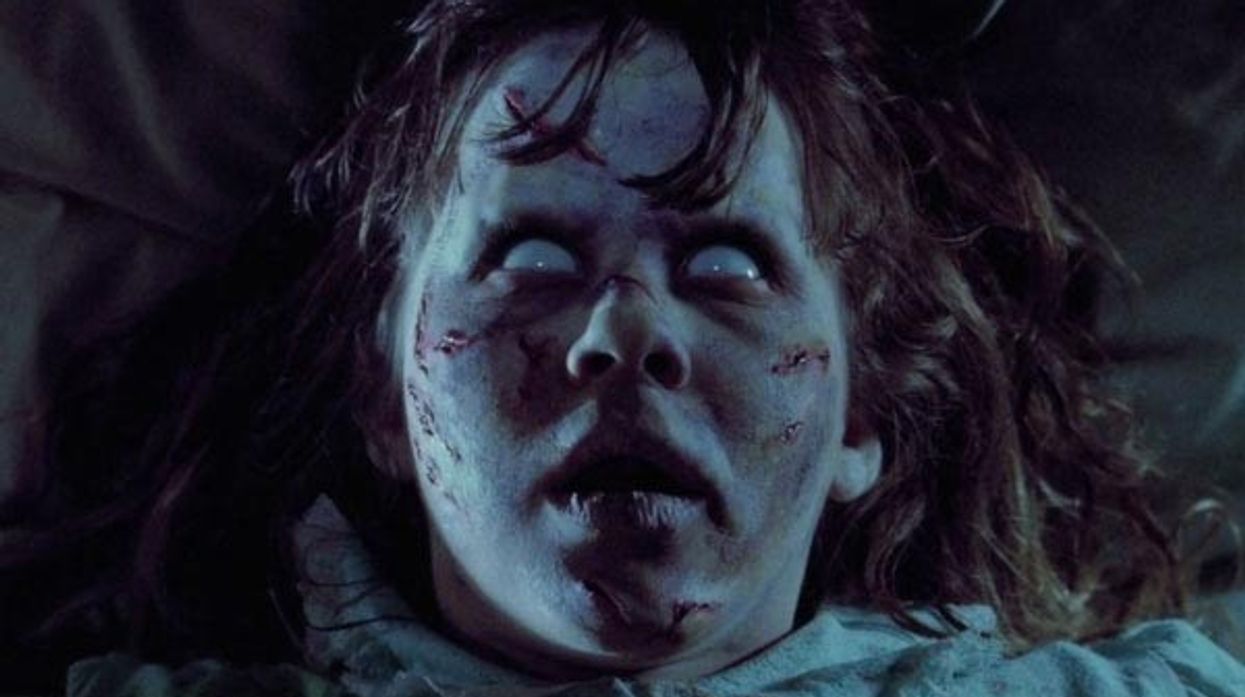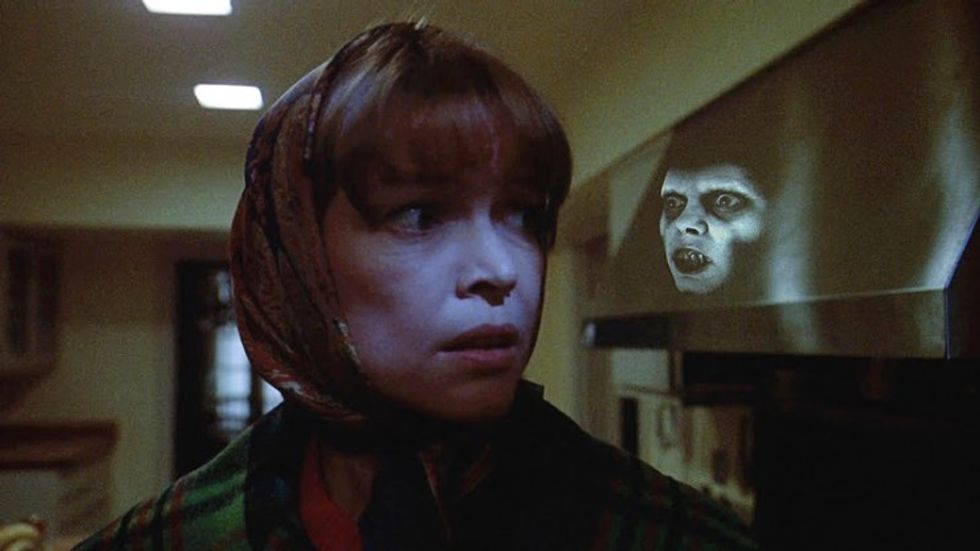This Scathing Review of 'The Exorcist' Reminds Us How Scary the Film Really Is
Horror films are designed to do one simple task—scare the audience.

The Exorcistscared the hell out of people when it was released in 1973. Based on William Peter Blatty’s novel of the same name, The Exorcist left audience members sick with terror, with some fainting once they escaped the theater.
Most fans of the horror genre believe that The Exorcist is one of the greatest horror movies ever made. The nightmare brought to life by director William Friedkin and screenwriter William Peter Blatty is a visually graphic, supernatural trip disguised as a family drama, ranking next to Hellraiser in its gruesome depictions of desire, hope, and complex relationships.
But if you were to ask film critic Pauline Kael what she thought about the movie, she would say that it is "the biggest recruiting poster the Catholic Church has had since the sunnier days of Going My Way and The Bells of St. Mary’s."
Kael, who was a notorious film critic for the New Yorker, was one of many critics that had a negative viewing experience of the highly divisive film. Her scathing review of the film hinged on the fact that she thought the film was too simple, propaganda for the church, and designed to do one thing—scare the audience.
Kael said The Exorcist Was Scary, but That’s About It
"Whatever Blatty's claims, if The Exorcist scares people that's probably all it has to do, in box-office terms, and basically that's all the whole unpleasant movie is designed to do," Kael writes in her review of the film.
And, to be fair, she's right.
Sure, like any movie ever made, there is a story that is being told and a moral being pushed onto the audience. The horror genre isn't any different. But instead of telling a story that moves the audience to tears, it strikes the audience in the heart with fear.
The Exorcist has a conservative ending that sits in stark contrast with the rest of the film. We may not know why the demon picked Regan to possess, but the filmmakers suggest that the divorce of her parents gave the demon its chance to enter Regan.
Father Karras ends up sacrificing himself, like “a modern Christ who dies to save mankind,” as Kael puts it, and the reward is that a girl, who we have witnessed being violently tormented throughout the runtime, lives. It’s an efficient reward, one we expect, but we might still feel rather empty due to the traumatic experience of watching a little girl being terrorized by a demon.
The book on which the movie is based was written to try drive people back to the church and encourage them to choose what the author thought to be "moral lives." The author of the novel did write the screenplay and Friedkin seemed to create a faithful adaptation.
While the values of the film may be outdated by today's standards, the film does a fantastic job of asking the audience to embrace traditionalism out of fear.

“A book like Blatty’s makes them sick, and [Hollywood] think this means they should make everybody sick,” Kael writes—but I don't necessarily think this is a negative thing.
Horror movies have always been designed to say something by pushing the audience into a corner with the horrors of the situation. The Exorcist delivers a satisfying amount of blood and vomit and shock value that will linger with you days after the viewing, forcing you to think about the morals and themes of the film over and over. If you cannot forget the fear you felt, then the film has done something right. To me, that's an effective horror film.
While Kael’s words are a lot more pointed than mine, the horror of The Exorcist relies on its simplistic, exploitative storytelling. I’m okay with a film that may wear its themes on its sleeves and say its goals in an exposition dump as long as it delivers what it promises.
Do you remember your first viewing of The Exorcist? Let us know your experience in the comments below!
Source: Scraps From the Loft











